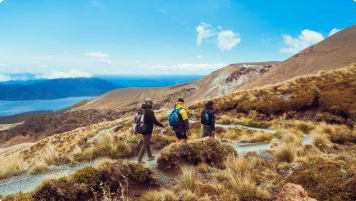Walking the Wainwright Walking Trail
small group educational tours for senior couples and mature solo travellers. This article supports the Wainwright walk from West to East of England through the Lake district for the older walker.
6 Sep 21 · 11 mins read
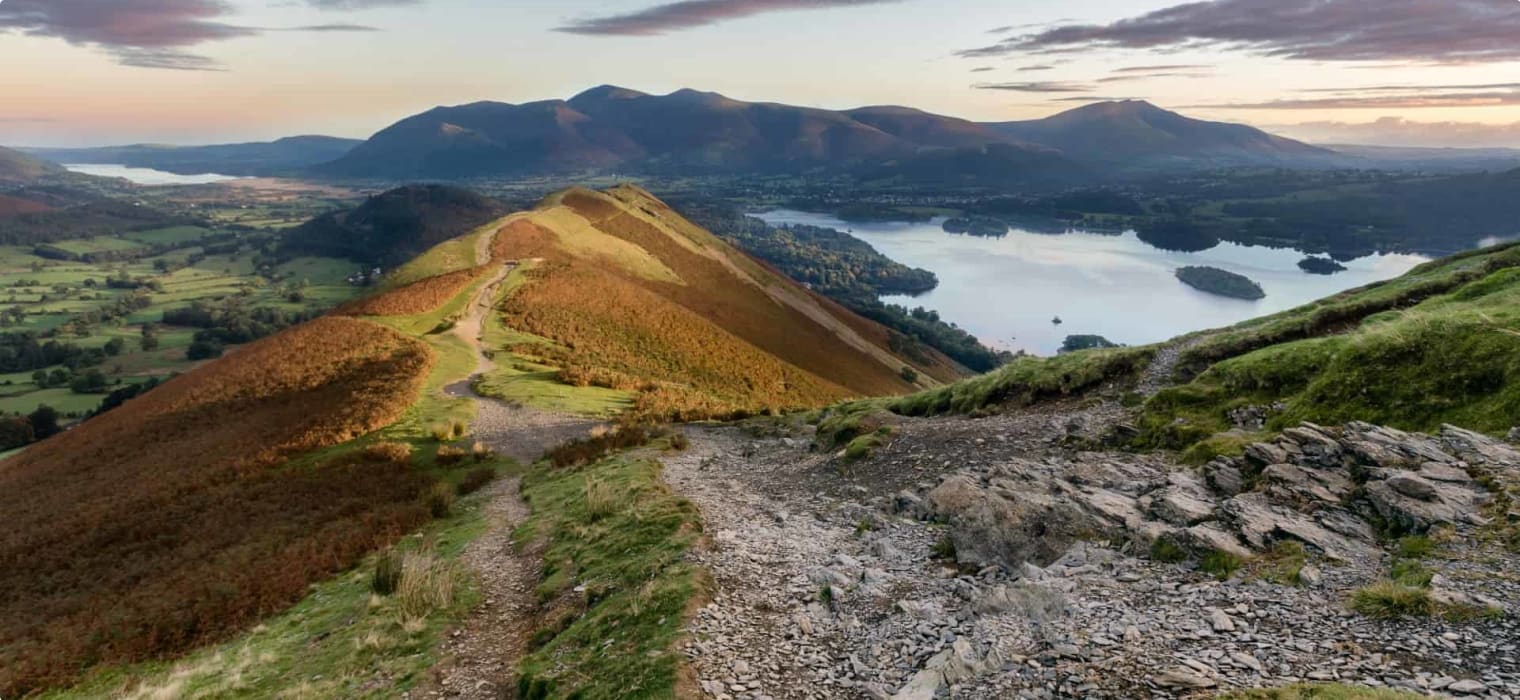
Walking the Wainwright Walking Trail
Wainwright’s Walking Trail, also known as England’s Coast to Coast trail, is the United Kingdom’s well-known but unofficial and mostly unsignposted long-distance walk in Northern England and regarded as one of the best walking tours in England. Devised by early 20th century English fell-walker, guide book writer, illustrator and cartographer Alfred Wainwright (1907-1991) in 1973, the 192-mile (309-km) scenic footpath takes the walker from St Bees in Cumbria overlooking the Irish Sea, to Robin Hood’s Bay by the North Sea coast, crossing the Pennines and passing through three national parks: the UNESCO world heritage site Lake District National Park, the Yorkshire Dales National Park, and the North York Moors National Park, where the scenery is bound to be stunning.
In this article, we will know more about the famous long-distance walk, including what to expect during the walk and the fascinating sights we may encounter as one of a collection of walking holidays for senior travellers. We will also share advice from getting fit, to selecting walking shoes and how to prepare for this epic journey.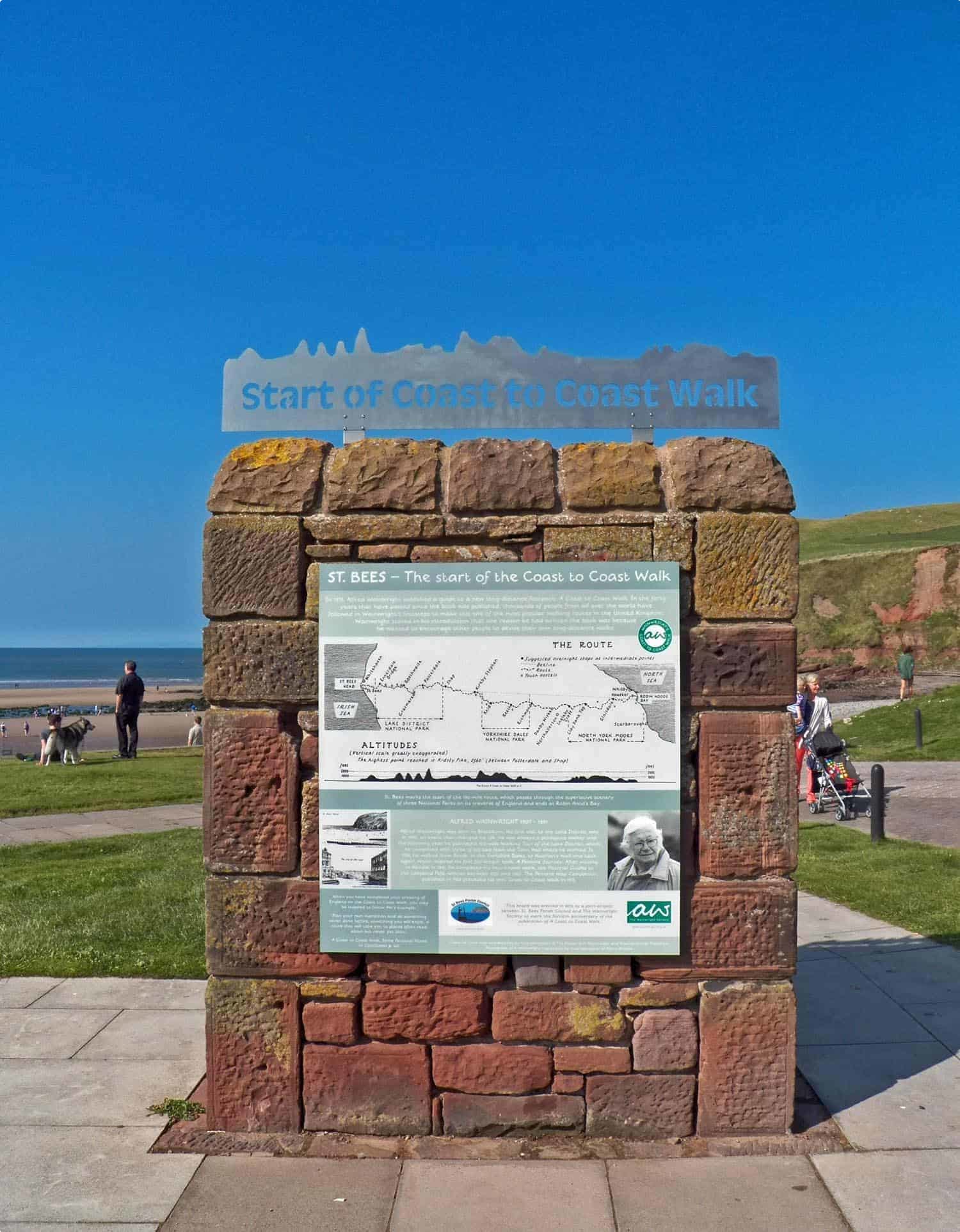
This article is based on several books and resources we will identify throughout this post, and is written as a backgrounder for our small group walking holidays, particularly our very own Wainwright Walking Trail tour. This tour for the active mature-aged or senior traveller has been especially designed for those with the stamina to follow the Wainwright Walking Trail, but also allows for those interested but are unsure of their ability to cover the whole distance to walk as much or as little as suits their individual interests and ability.
We begin our coast to coast trail in Carlisle and finish in York. This walking experience starts and finishes in beautiful coastal landscapes as we walk from west to east, with the wind typically at our backs.
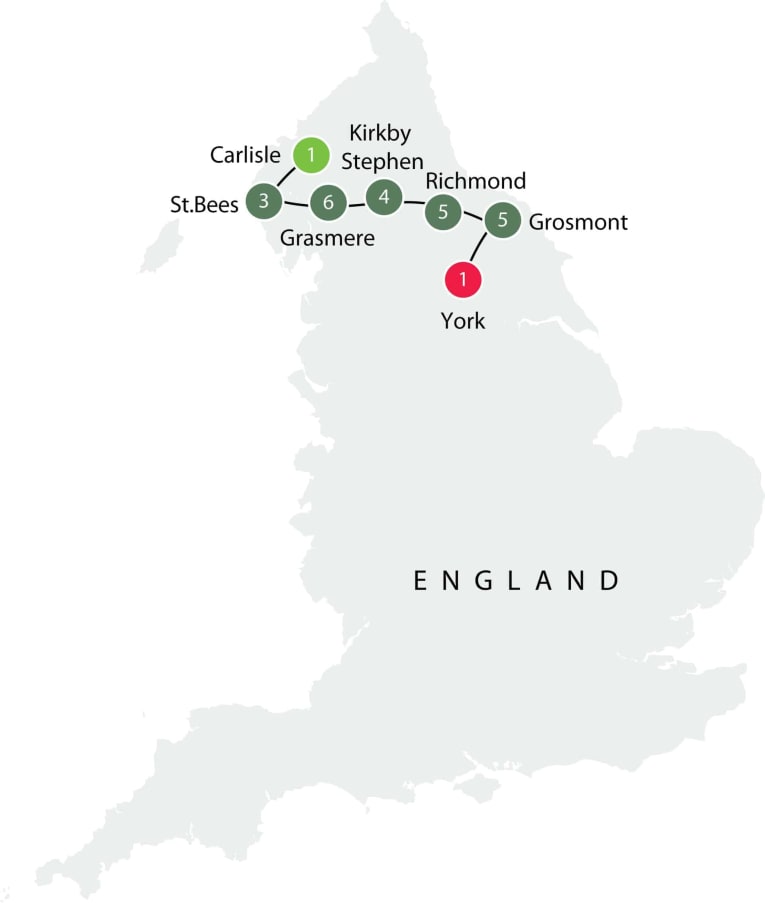
Just click through this link to see the collection of tours of England that you may join, and this link to see our collection of hiking and walking tours.
We also publish articles that may help you with your planning:
- Yorkshire, England in the 17th-19th Centuries
- Roman Roads in Britain
- Understanding British Churches
- Icons of British Villages
- Lumps and bumps, how to read the British landscape
- Traveller’s Guide in Medieval England
- How to prepare for a walking holiday
- Touring England’s Villages
- Britain: First Industrial Nation
- Life in the Medieval British Village
For all the articles on the British Isles published by Odyssey Traveller, please click through on this link to view.
Wainwright’s Original Walk, and Deviations
Wainwright originally described the route in his 1973 book, A Coast to Coast Walk. The book splits the route into 12 stages-if divided equally, each stage is 16 miles or 25 km-ending in quaint villages each day where walkers can find hotel accommodation. A common way of walking the route is one stage per day, with one or two rest days, which means it would take the walker about two weeks to walk Northern England from west to east following in the footsteps of Wainwright’s quintessentially English
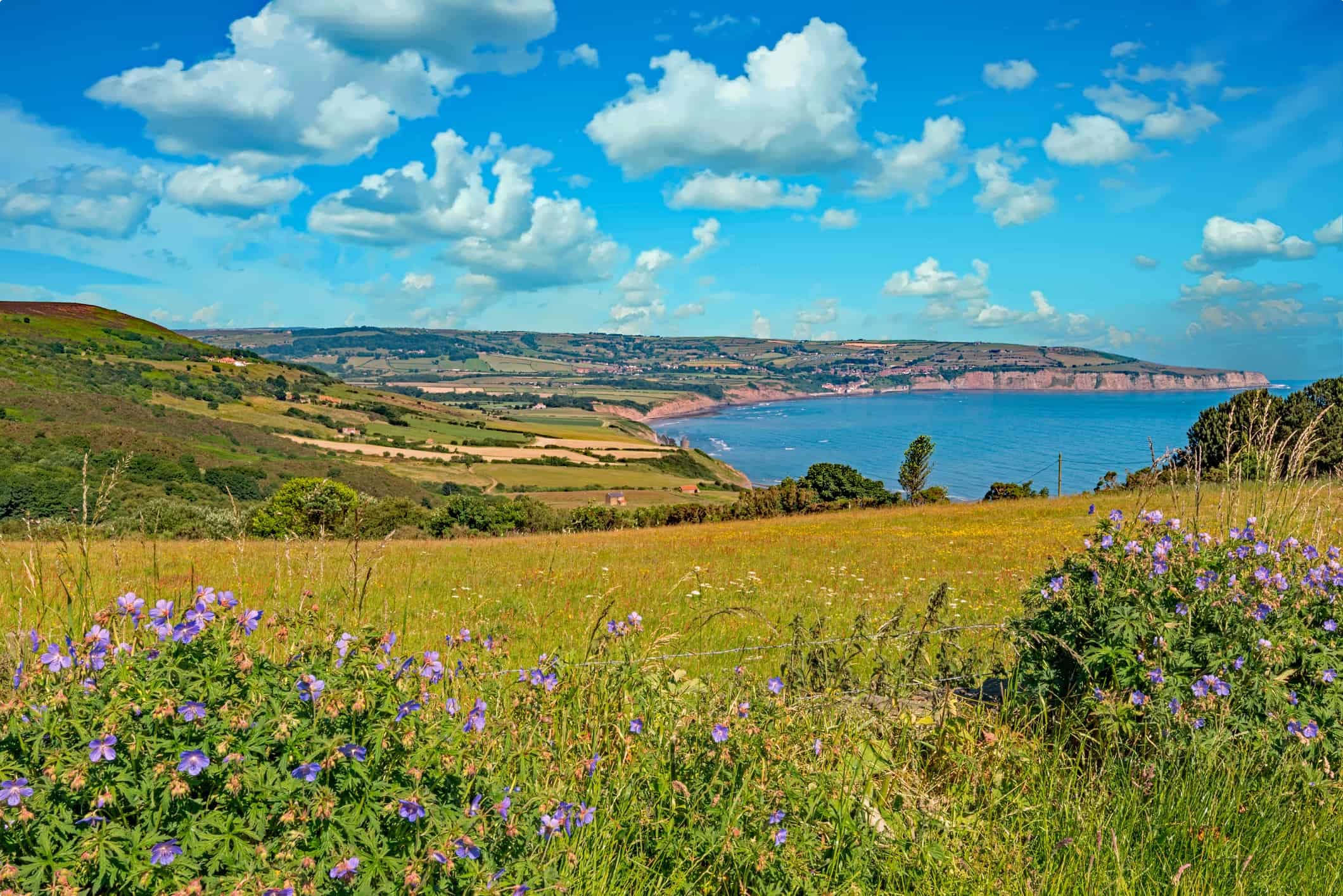
Lonely Planet’s guide of Britain describes 14 stages:
- St Bees to Ennerdale Bridge – 14 miles
- Ennerdale Bridge to Rosthwaite – 15 miles
- Rosthwaite to Grasmere – 10 miles
- Grasmere to Patterdale – 8 miles
- Patterdale to Shap – 16 miles
- Shap to Kirkby Stephen – 20 miles
- Kirkby Stephen to Keld – 13 miles
- Keld to Reeth – 11 miles
- Reeth to Richmond – 11 miles
- Richmond to Ingleby Cross – 23 miles
- Ingleby Cross to Clay Bank Top – 12 miles
- Clay Bank Top to Blakey – 9 miles
- Blakey to Grosmont – 13 miles
- Grosmont to Robin Hood’s Bay – 16 miles
However, this is only a guide, and Wainwright himself stated that he did not expect people to follow his route or his pace. For example, Annette Hirst and Annette Freeman, co-authors of Two Annettes Walk the Downs and Ups of the Coast to Coast (Caroline Brannigan, 2018), related that their ideal distance was five or six miles of walking (8 to 10 km) a day, completing each section as part of a day tour. They knew they wouldn’t be able to cover Wainwright’s daily distance, which in some of his devised stages ran up to 20 miles (32 km). Hirst quips: “Mr Wainwright was a bit blasé about ups, regarding most of them as negligible and I soon learned not to trust him” (Hirst & Freeman, 2018, p.2). Another practical reason for deviating from the classic route is the simple fact that new developments have already transformed some routes since the 1970s.
So the two Annettes devised their own stages as a collection, with pace that fit their fitness levels and needs. (Our own walk deviates a little from Wainwright’s original trail.) Hirst described herself as “a 64-year-old woman with a knee replacement” and Freeman at the time of the walk was 59, proving that age need not be a barrier in enjoying a long-distance walk–a belief that Odyssey Traveller, travelling with over 50s since 1983, can certainly get behind!
Planning Your Walk
When to Go
As with any long-distance travel, some degree of planning is required. In an interview with Coast to Coast Guides, a professional local guide suggested May, June and September as the best months to do the walk, as the days are longer. (Our walking tour commences June and September.) You can also expect less congestion compared to the peak holiday season in July and August.
This also ensures pleasant weather, though note that North England weather can be variable, especially in exposed altitudes in the Pennines, according to Keven Shevels in Walks around Reeth & Upper Swaledale (Trailguides Limited, 2012). Shevels also warns that “[m]ist and low cloud can be experienced no matter the time of year and at times this can roll in quite quickly catching the walker unaware” (p. 8). It is best to check the weather forecast every day before heading out on your walk to know what to expect in terms of temperature, daylight hours, and visibility.
The average temperature for St Bees, where the trail begins, is around 14 to 16 degrees Celsius (May-September high) and 8 to 11 degrees (low).
Health Checkup & Training
This walk, depending on the pace you choose, can be physically demanding, so it would be best to get in shape and start walking! It is always a good idea to go for a general health checkup with your GP before embarking on walking holidays or tours that might be a little strenuous. Your doctor will be able to advise you as to your general fitness, and any precautions you should take before heading off on the walk. It’s also worth having a dental exam to ensure there are no unexpected toothaches along the way.
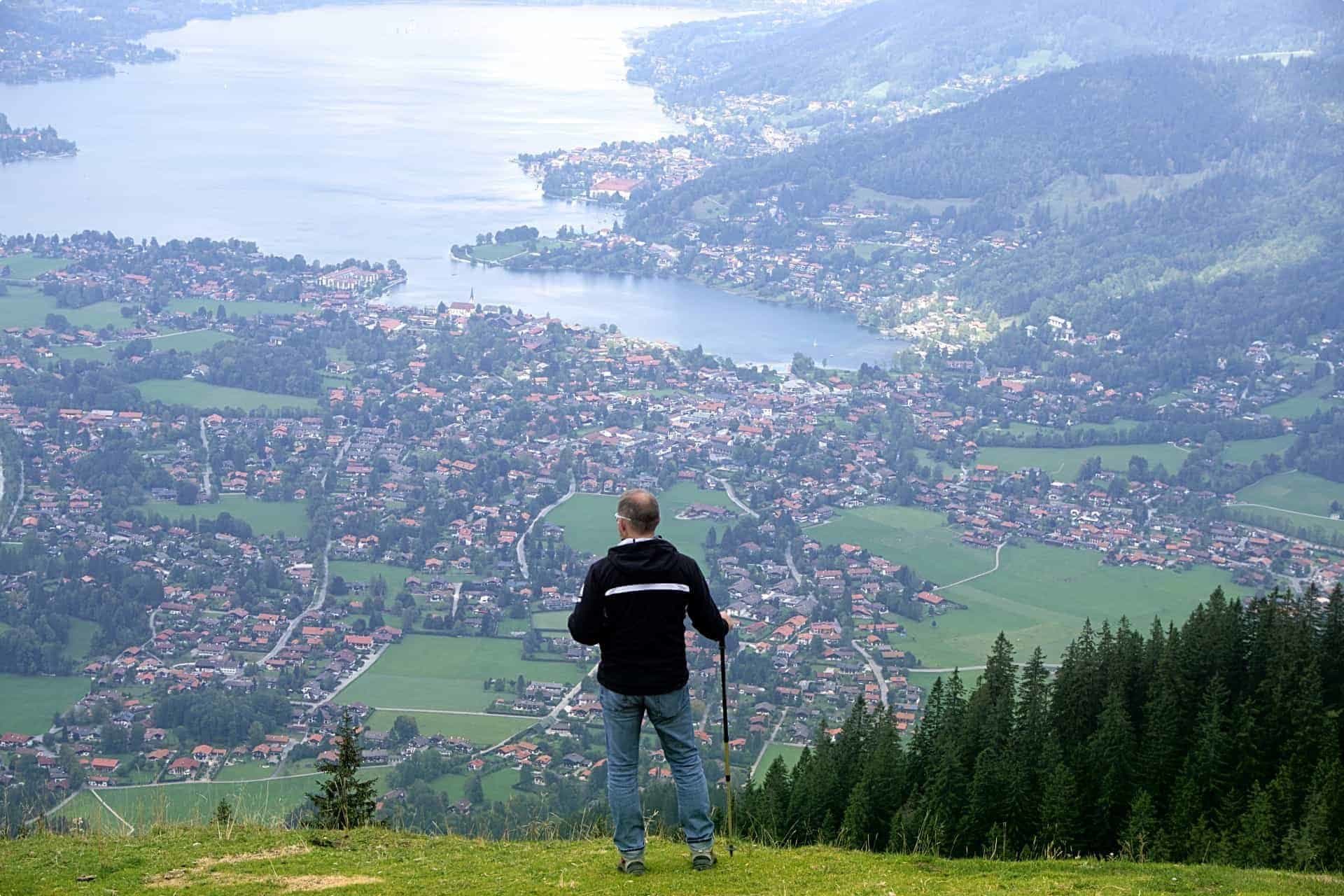
With the help of your healthcare provider, commit to a fitness training regime in the lead up to your departure. The exact nature of the schedule will depend on the length and difficulty of the walk and your current level of fitness. For the Wainwright Walking Trail, if you’re planning to walk all 192 miles, a professional local guide advises that you begin by walking several three-to-five-mile circuits, varying the terrain and carrying a few pounds of weight–a backpack filled with bottles of water, for example–until you’ve built up to walking 10 miles.
Again, consult with your GP regarding the soundness of your planned regimen in relation to your fitness level and health in order to avoid injury.
Packing for the Walk
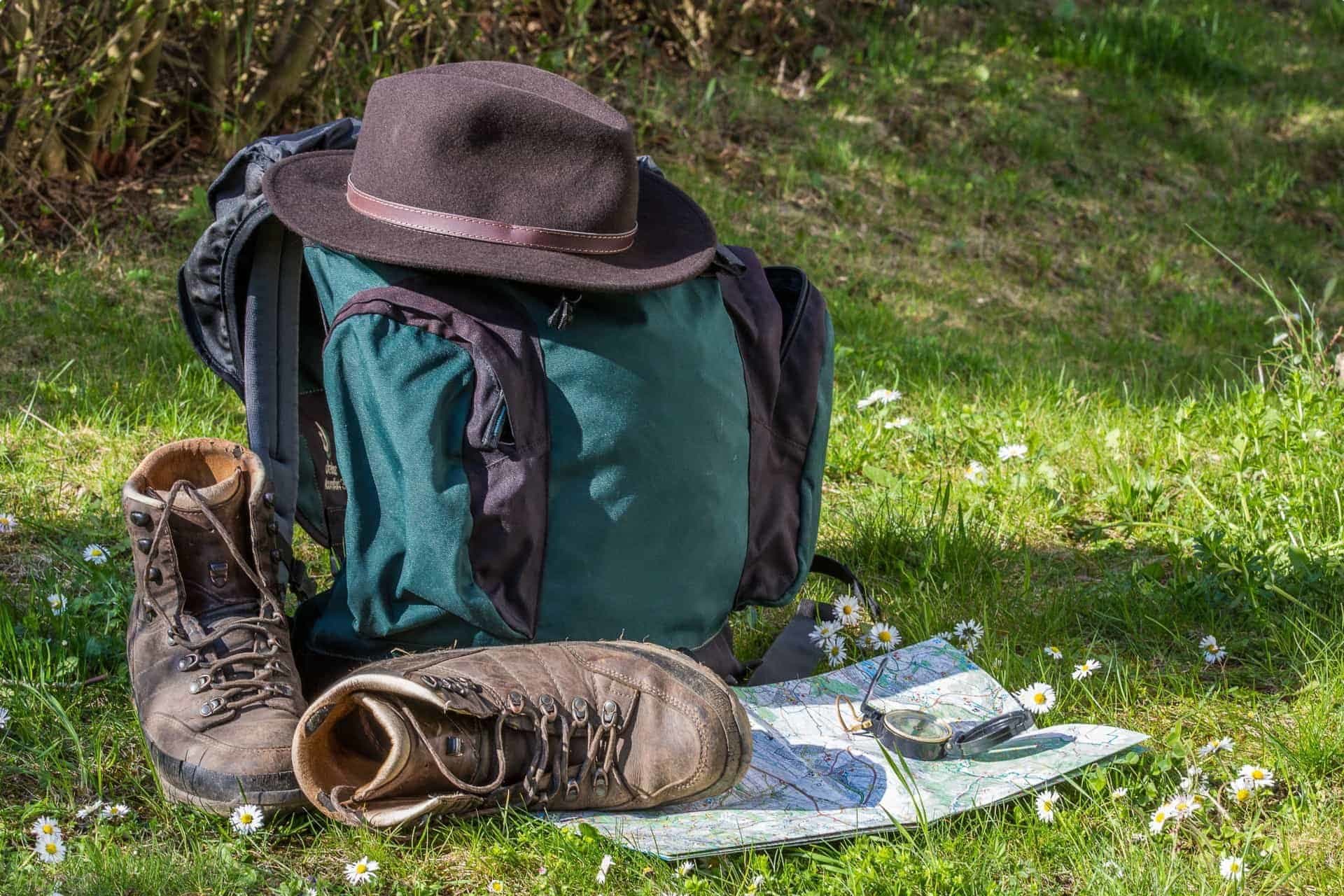
We’ve shared our tips before:
- Buy appropriate footwear – A good pair of boots can make all the difference between a wonderful walk and a difficult walk. For the Wainwright trail, you must have boots that are comfortable to use when ascending and descending steep hills, and hardy enough to survive craggy and stony paths as well as boggy areas.
Read more: Selecting shoes and socks; Choosing the Right Walking Shoes: Advice for Women
- Always protect yourself from excessive sun exposure – so pack a hat, sunglasses, and sunscreen
- Prepare for unexpected weather – Nothing can ruin a walk like having all your belongings soaked, or a cold wind picking up and cutting right through your shirt. So, light, insulating and waterproof gear is always worth investing in.
Accommodation
The Wainwright Walking trail takes you on public footpaths and minor roads that go through small villages, so hotel accommodation is limited, made more restricted by the fact that this trail is consiidered as one of the best walking tours in England. Booking hotel accommodation can be a headache, but if you join the Odyssey Traveller Wainwright tour, we’ll take care of this for you.
We will also have a private coach to collect walkers at the end of each stage, and we have alternative activities for those who decide not to do the walk, or decide to do only parts of the walk.
Our coach will transport us with our luggage each morning to the point we left off walking in the previous afternoon, and collect us at the end of the day’s walk. Participants who prefer to opt out of that day’s walk and rest their feet will be able to explore the quaint villages and Georgian towns on their own, or join an alternative activity, e.g. visiting Blackwell, the stunning Arts and Crafts house on Windermere, while walkers walk 14 km from Borrowdale to Grasmere.
A number of rest days will be built into the program even for those who intend to walk the whole distance.
What to Expect on the Walk
This coast to coast trail is popular for a reason. Traversing northern England from west to east through three major national parks, this walk offers an abundance of beautiful scenery. The landscapes along this trail are spectacular, diverse, and memorable.The walking is varied including numerous ascents and descents with views across lakes, valleys, moors, rolling hills and mountain peaks and passes.

The diverse terrain also means diverse walking conditions, from easy, grassy farmlands to difficult, steep, and rocky trails. The weather can also very quickly turn an “easy” path into a challenging one. Both Hirst and Andrew Bowden, another walker who had finished the trail (and also wrote about his experience), described being hit by strong winds at the very start of the trail at St Bees. “I couldn’t keep my hair off my face,” said Hirst (p. 44), while Bowden remarked that “the wind that had howled around our hotel the night before, had remained and was doing a sterling job of trying to blow us to the [ground].”
The Patterdale to Shap stage is said to be the hardest part as this stage has Kidsty Pike, a fell in the Lake District, which at 780 metres is the highest point of the Wainwright Walking Trail. (“Fell” is the term used in Northern England, Isle of Man and Scotland to describe a high barren field or moor.) The classic main route takes walkers to Kidsty Pike’s cairn-topped summit and down a steep section during descent. But again, walkers are free to deviate from the classic route.
You will also be walking through remote countryside with a thin population, so it is best to walk the trail with a companion or a small group or ideally with a local guide so you’ll have someone to turn to in case of sudden illness or injury. For navigation, carry a map and a compass, or better yet, travel with a guide with knowledge of the trail and the area, since the Wainwright Walking Trail has no official signage save for some “Coast to Coast” signs in some towns and villages. You will not find any signage at all in the Lake District and parts of the Yorkshire Dales, for example.
What You’ll See on the Walk
Lake District
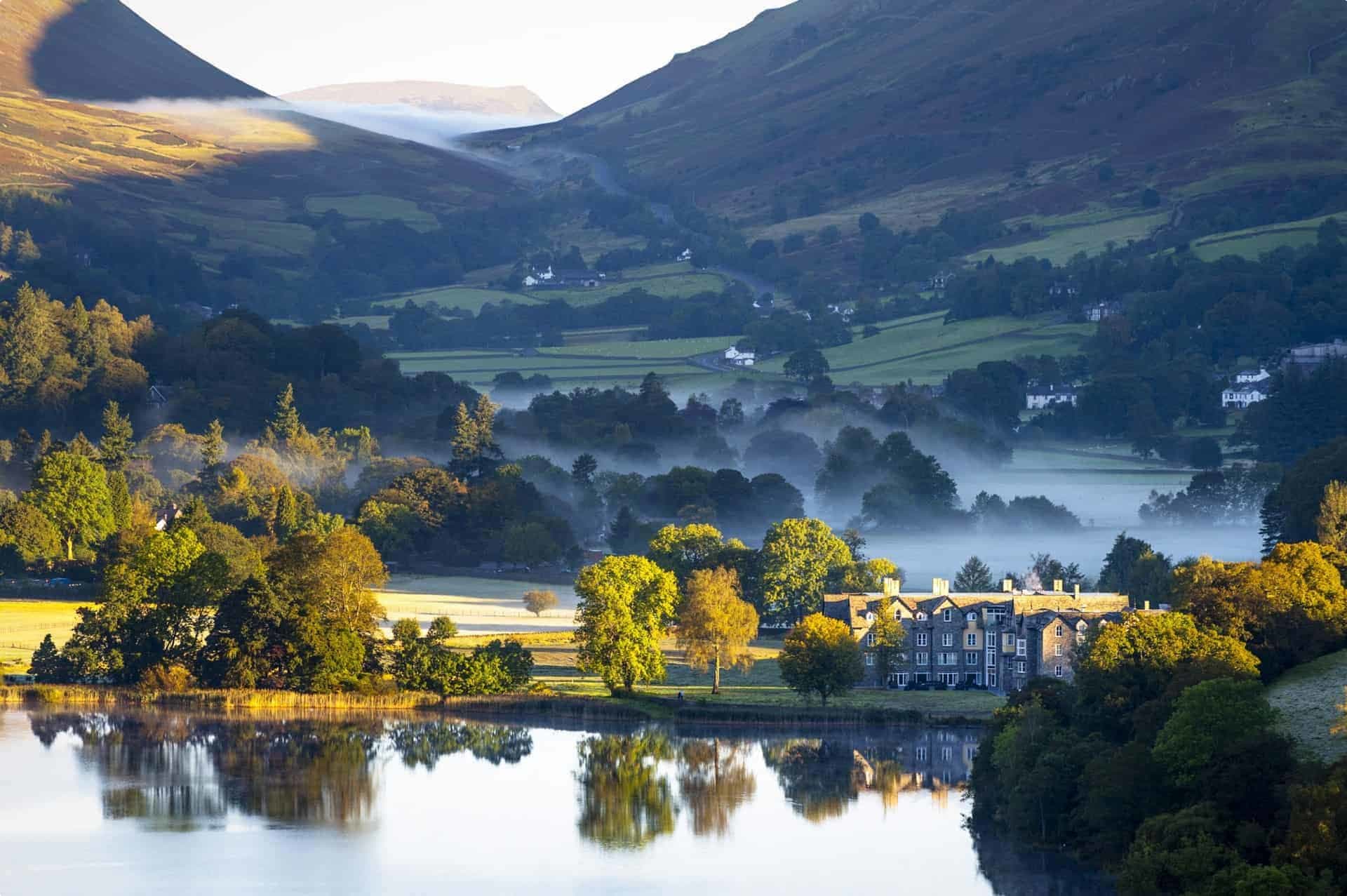
The Lake District, part of the county of Cumbria, is the largest of the United Kingdom’s National Parks and is home to some of the most spectacular and dramatic scenery in the country and a UNESCO world heritage site. Designated as a National Park in 1951, this breathtaking region of craggy hilltops and spectacular views has attracted visitors for centuries. The park contains 16 lakes, including Lake Windermere, England’s largest natural lake. The region is also famous as the birthplace of British Romanticism, which does not surprise anyone who has witnessed its magnificent landscapes.
Read more: Discover the Lake District, England
Yorkshire Dales
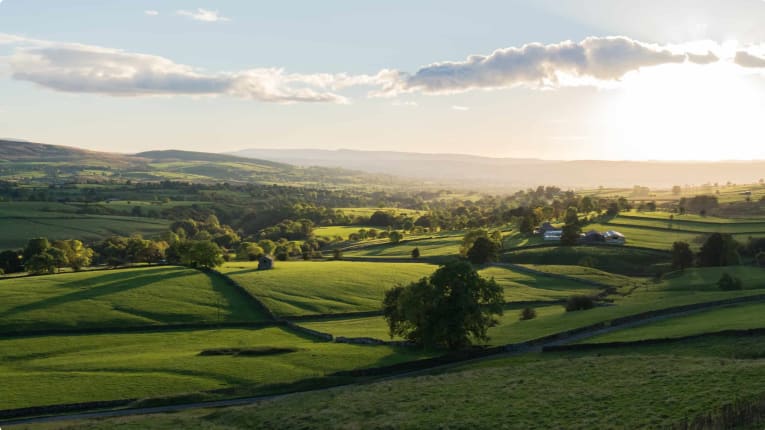
Another premier destination that is included on this classic walk are the memorable Yorkshire Dales, designated a National Park in 1954. Paul Hannon in The Yorkshire Dales: A Selection of 10 Walks (Bradwell Books, 1988) describes the area as “a string of valleys divided by high and lonely moorlands” (p. 5) dotted with famous quaint villages and majestic hidden gems of waterfalls. Medieval times meet the modern age in the Dales, with walkers treated to castles and abbeys in one area, and abandoned lead mines in another. Lead mining was once a major industry in the Dales, which greatly transformed its landscape and Britain’s economy.
North York Moors
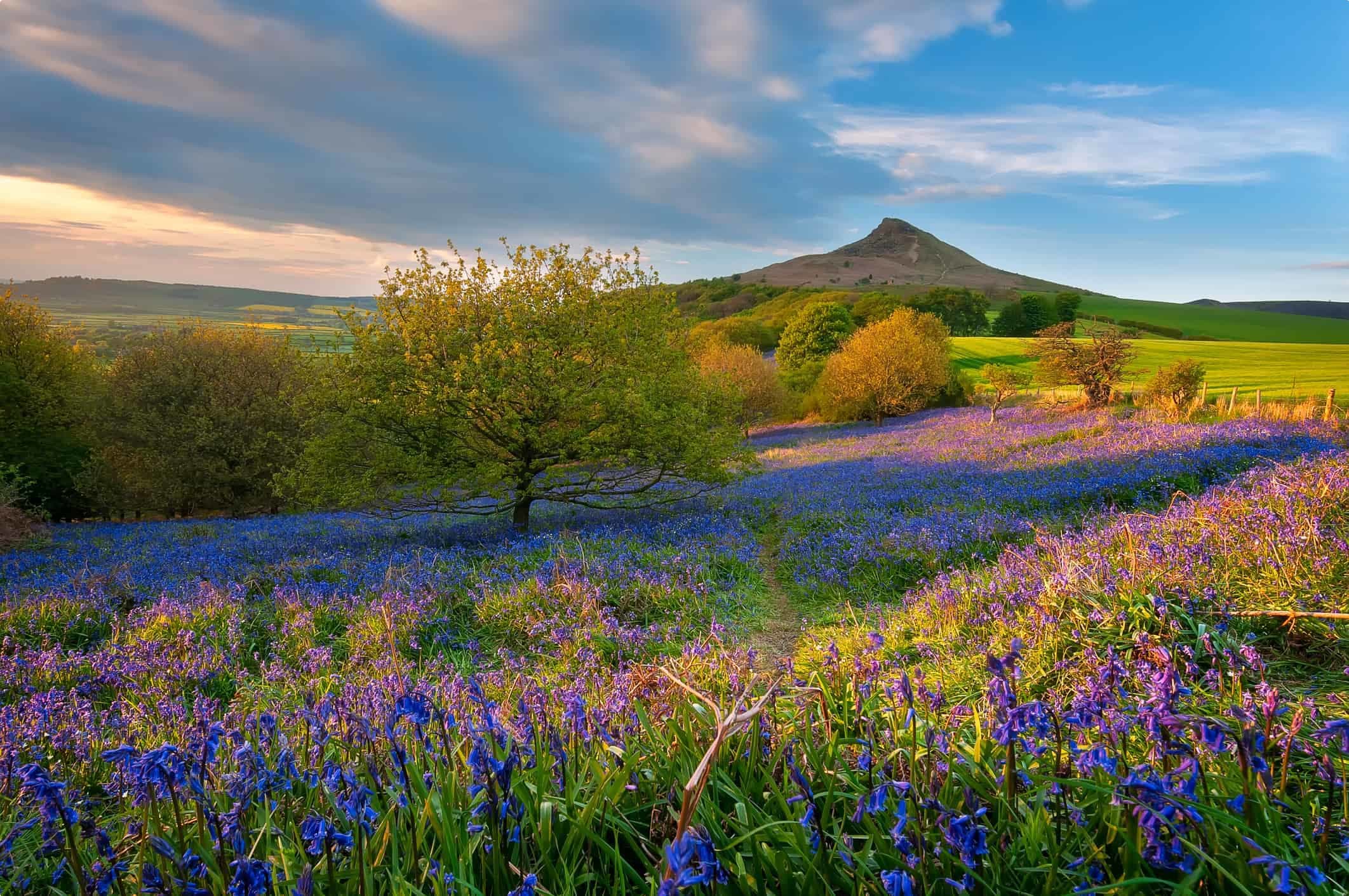
The United Kingdom has 70 percent of the world’s heather moorland, and the North York Moors has one of its largest continuous expanses. In the summer, the heather in the North York Moors’ higher ground blooms and turns the moorland into a magical memorable purple landscape. Compared to the two national parks we’ve mentioned, the North York Moors is the most wooded, with 300 square kilometres of woodland and forests. You can walk amongst oak, ash, birch, and rowan, with hazel and hawthorn shrubs underfoot in the forests. About five percent of the Moors is ancient woodland, meaning these forests have been in existence for 400 years, home to animals and plants that you can find nowhere else.
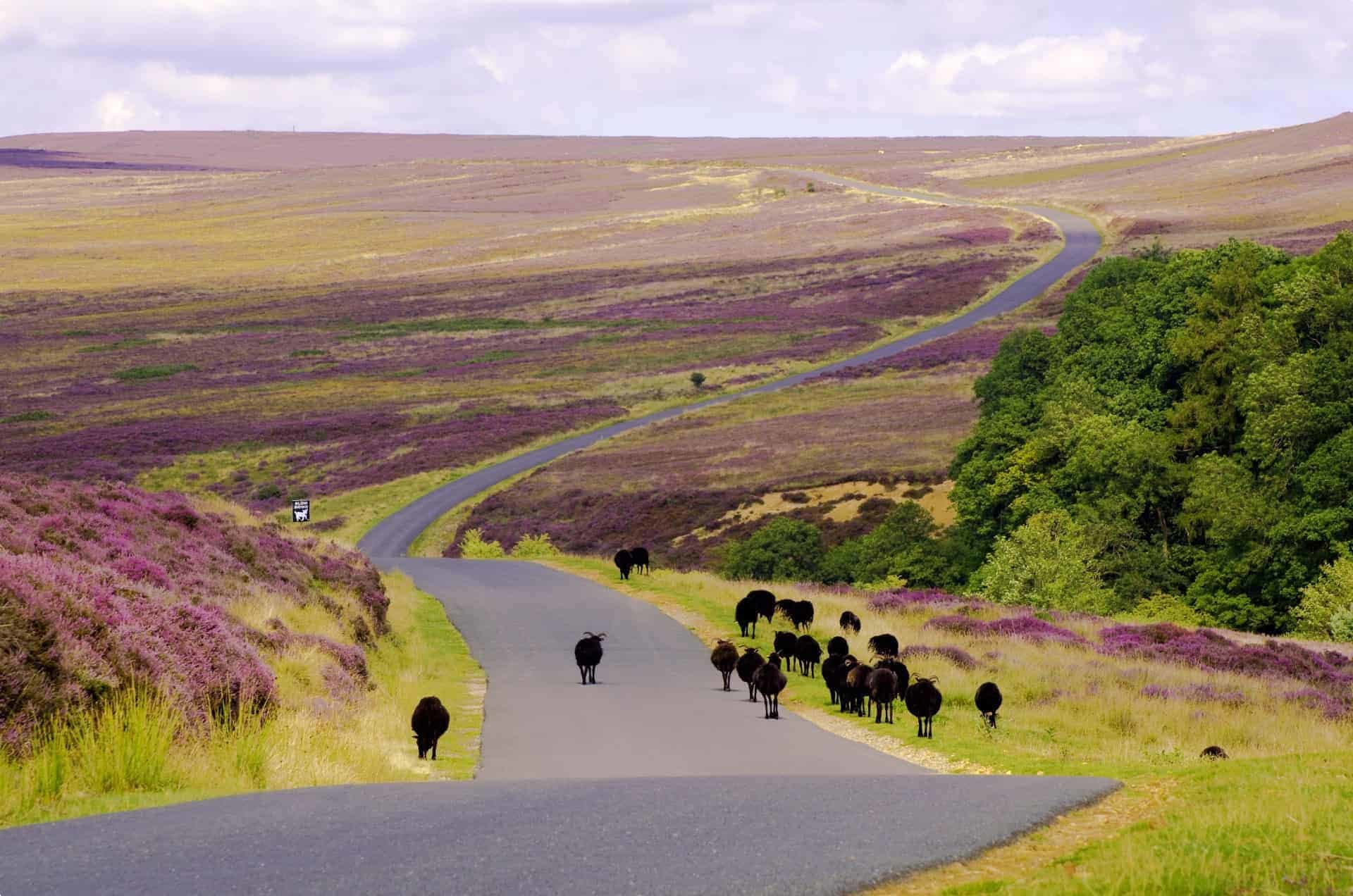
The English Countryside
Farming plays a crucial role in the English countryside, and on your walk you may come across cattle and sheep grazing. While some villages are only big enough to have the one cafe (if that), others, such as the memorable quaint villages like Reeth in the Richmondshire district (Shevels, 2012), will have an abundance of pubs, cafes, and shops where visitors can experience local crafts such as brewing and cheesemaking (Hannon, 1988).
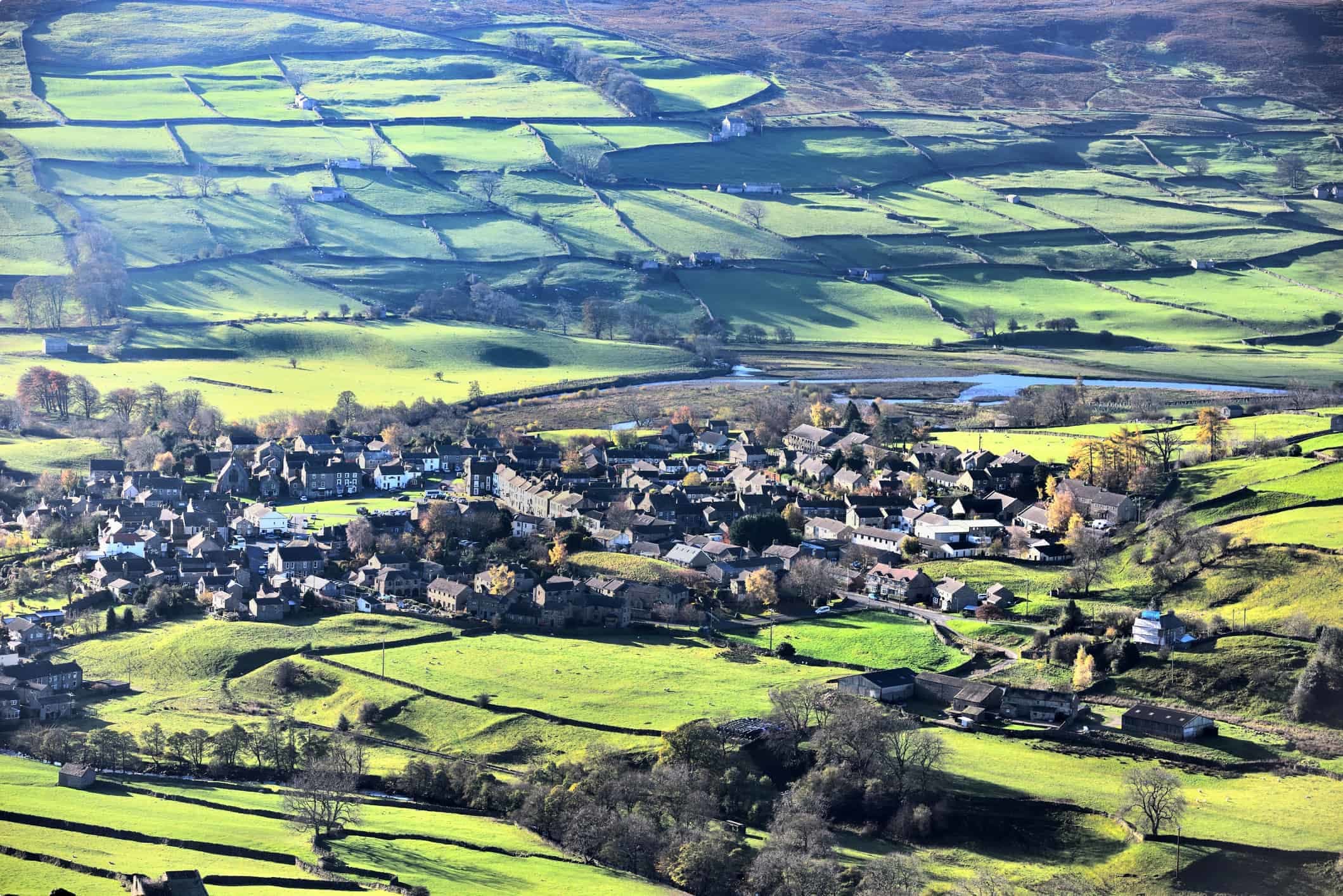
Beginning the Walk
To get to the start of the trail, you can take a train from London and Manchester to stop at Carlisle. At Carlisle you can board a train to St Bees.
If you join an Odyssey Traveller tour, we will take a guided walking tour of Carlisle before travelling comfortably by coach to St Bees Head.
There are two traditions associated with the Wainwright Walking trail: you dip your foot (or your boots) into the Irish Sea, and pick a pebble at the start of the trail. You then leave this pebble at Robin Hood’s Bay and take a dip in the North Sea at the end of your epic walk.
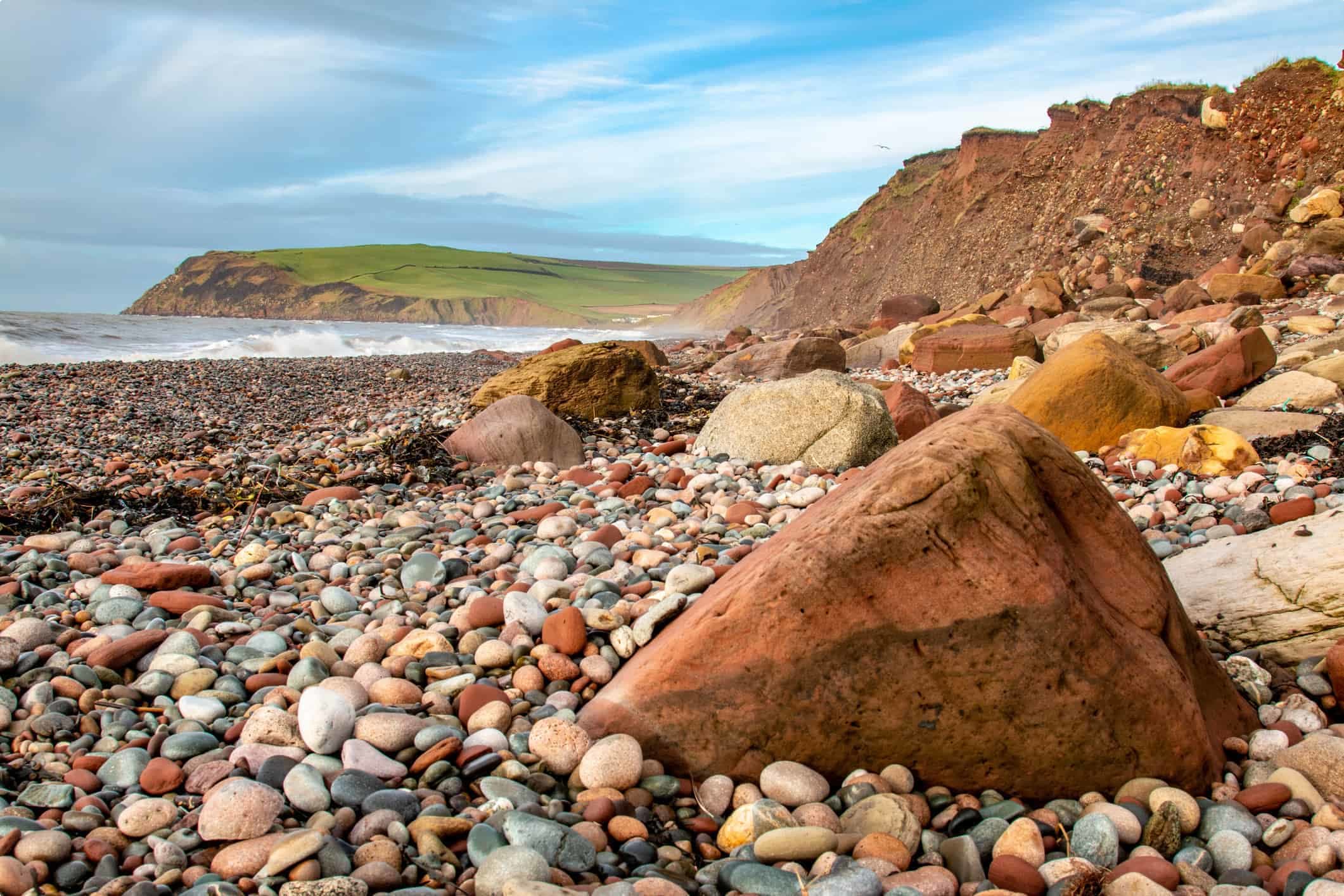
Are you ready? Be prepared and bring you sense of adventure, and you will definitely enjoy walking the Wainwright Walking Trail!
About Odyssey Traveller

We specialise in educational small group tours for seniors, typically groups between six to 12 people from Australia, New Zealand, USA, Canada and Britain. Our maximum number of people on a tour is 18 mature aged travellers. Typically, our clients begin travelling with us from their mid 50’s onward. But be prepared to meet fellow travellers in their 80s and beyond! Both couples and solo travellers are very welcome on our tours. We have some 150 tours and offer 300 scheduled departures on offer each year. Odyssey has been offering this style of adventure and educational programs since 1983.
Odyssey Traveller is committed to charitable activities that support the environment and cultural development of Australian and New Zealand communities.
Odyssey Traveller scholarship for Australia & New Zealand University students.
We are also pleased to announce that since 2012, Odyssey has been awarding $10,000 Equity & Merit Cash Scholarships each year. We award scholarships on the basis of academic performance and demonstrated financial need. We award at least one scholarship per year. We’re supported through our educational travel programs, and your participation helps Odyssey achieve its goals. Students can apply for the scholarship by clicking on this link to find out more details.
Join our loyalty program when you join an international small group tour.
Every International small group tour taken typically contributes to your membership level in our Loyalty Program for regular travellers. Membership of the alumni starts when you choose to take your first international small group tour with Odyssey Traveller, discounts in tour pricing for direct bookings accrue from your third tour with Odyssey Traveller. To see the discounts and benefits of being a Bronze, Silver, Gold, and Diamond alumni member with us, please see this page.
For more information on Odyssey Traveller and our educational small group tours, visit and explore our website, and remember to visit these pages in particular:
- Terms and conditions applicable for booking an Odyssey Traveller tour.
- FAQ’s about Odyssey Traveller
Alternatively, please call or send an email.
Walking tours
Related Articles

A Journey Through Britain's Roman Roads
Rome's roads constitute the most remarkable culmination of its technological, logistical and bureaucratic achievements. Even a brief understanding of their history and significance can enrich your experience walking tour of Britain.
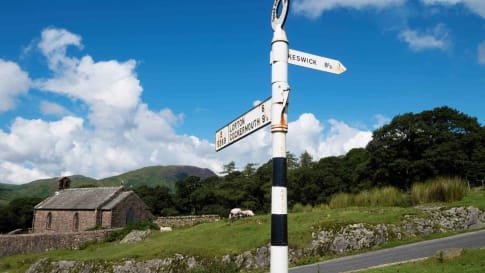
Discover the Lake District England
Article supporting senior couples and solo travellers with articles of interest about England, the romantics of the lake district. As well as tours and walks in the Lakes.

Dry Stone Walls: An Alternative History of the British Isles
Throughout the nation, from Yorkshire to Orkney, miles of moss-covered dry stone walls snake their way through the open land. You would be forgiven for not looking twice. However, dry stone walls offer an alternative route into the history of humanity in the British Isles.
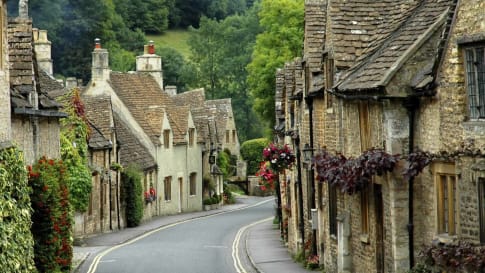
English Village History
An English Village history. Prepared for mature and senior travellers, couples or solo traveller considering joining a small group tour of England's villages.
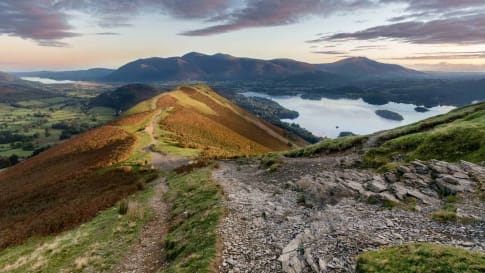
The Lake District poets: Romanticism & inspiration
The Lake District poets: Romanticism and inspiration for Travellers “I wandered lonely as a cloud” Did a simple daffodil usher in the Romantic era? Poet William Wordsworth and his sister Dorothy came upon a “host”…

Understanding British Churches: The Definitive Guide for Travellers
British Churches Through the Years “How old is this church?” asks Mary-Ann Ochota in a chapter of her book, Hidden Histories: A Spotter’s Guide to the British Landscape (Francis Lincoln, 2016, p. 250). In this article, we…
